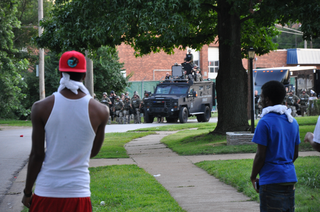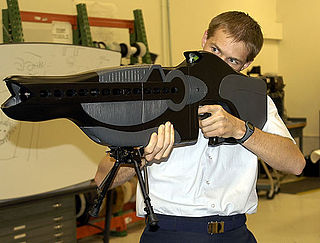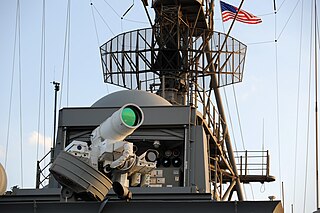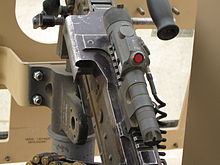
Non-lethal weapons, also called nonlethal weapons, less-lethal weapons, less-than-lethal weapons, non-deadly weapons, compliance weapons, or pain-inducing weapons are weapons intended to be less likely to kill a living target than conventional weapons such as knives and firearms with live ammunition. It is often understood that unintended or incidental casualties are risked wherever force is applied, but non-lethal weapons try to minimise the risk of casualties as much as possible. Non-lethal weapons are used in policing and combat situations to limit the escalation of conflict where employment of lethal force is prohibited or undesirable, where rules of engagement require minimum casualties, or where policy restricts the use of conventional force. These weapons occasionally cause serious injuries or death; the term "less-lethal" has been preferred by some organizations as it describes the risks of death more accurately than the term "non-lethal", which some have argued is a misnomer.

A directed-energy weapon (DEW) is a ranged weapon that damages its target with highly focused energy without a solid projectile, including lasers, microwaves, particle beams, and sound beams. Potential applications of this technology include weapons that target personnel, missiles, vehicles, and optical devices. In the United States, the Pentagon, DARPA, the Air Force Research Laboratory, United States Army Armament Research Development and Engineering Center, and the Naval Research Laboratory are researching directed-energy weapons to counter ballistic missiles, hypersonic cruise missiles, and hypersonic glide vehicles. These systems of missile defense are expected to come online no sooner than the mid to late-2020s.

MIRACL, or Mid-Infrared Advanced Chemical Laser, is a directed energy weapon developed by the US Navy. It is a deuterium fluoride laser, a type of chemical laser.
The Active Denial System (ADS) is a non-lethal directed-energy weapon developed by the U.S. military, designed for area denial, perimeter security and crowd control. Informally, the weapon is also called the heat ray since it works by heating the surface of targets, such as the skin of targeted human beings. Raytheon had marketed a reduced-range version of this technology. The ADS was deployed in 2010 with the United States military in the Afghanistan War, but was withdrawn without seeing combat. On August 20, 2010, the Los Angeles Sheriff's Department announced its intent to use this technology to control incarcerated people in the Pitchess Detention Center in Los Angeles, stating its intent to use it in "operational evaluation" in situations such as breaking up prisoner fights. As of 2014, the ADS was only a vehicle-mounted weapon, though U.S. Marines and police were both working on portable versions. ADS was developed under the sponsorship of the Department of Defense Non-Lethal Weapons Program with the Air Force Research Laboratory as the lead agency. There are reports that Russia and China are developing their own versions of the Active Denial System.
The veiling-glare laser is a proposed laser dazzler, a non-lethal weapon which would use light in the ultraviolet (UV) range. The intended effect would be to cause fluorescence in the lens of the eye, producing intense glare and making clear vision impossible. In September 2002, the Joint Nonlethal Weapons Directorate announced the proposal was under development.

The personnel halting and stimulation response rifle (PHASR) is a prototype non-lethal laser dazzler developed by the Air Force Research Laboratory's Directed Energy Directorate, U.S. Department of Defense. Its purpose is to temporarily disorient and blind a target. Blinding laser weapons have been tested in the past, but were banned under the 1995 UN Protocol on Blinding Laser Weapons, which the United States acceded to on 21 January 2009. The PHASR rifle, a low-intensity laser, is not prohibited under this regulation, as the blinding effect is intended to be temporary. It also uses a two-wavelength laser. The PHASR was tested at Kirtland Air Force Base, part of the Air Force Research Laboratory Directed Energy Directorate in New Mexico.

A laser weapon is a directed-energy weapon based on lasers. After decades of R&D, as of January 2020 directed-energy weapons including lasers are still at the experimental stage and it remains to be seen if or when they will be deployed as practical, high-performance military weapons. Atmospheric thermal blooming has been a major problem, still mostly unsolved, and worsened if fog, smoke, dust, rain, snow, smog, foam, or purposely dispersed obscurant chemicals are present. Essentially, a laser generates a beam of light which needs clear air, or a vacuum, to work without thermal blooming.
The ZM-87 Portable Laser Disturber is a Chinese electro-optic countermeasure neodymium laser device. The ZM-87 was primarily intended to blind humans but was also reported to damage the photo-electric elements in laser rangefinders, videocameras and missile seekers. Roughly 22 of the devices were produced by the company Norinco before production ceased in 2000 as a result of the 1995 United Nations Protocol on Blinding Laser Weapons ban.
The Protocol on Blinding Laser Weapons, Protocol IV of the 1980 Convention on Certain Conventional Weapons, was issued by the United Nations on 13 October 1995. It came into force on 30 July 1998. As of the end of April 2018, the protocol had been agreed to by 109 nations.
XADS is a privately held firm in Anderson, Indiana, United States. XADS is a producer of NLDEW for protecting and defending in military operations, law enforcement, site security, and peacekeeping. XADS was founded in 2002 after a proposal was submitted to the United States Marine Corps.

Under certain conditions, laser light or other bright lights directed at aircraft can be a hazard. The most likely scenario is when a bright visible laser light causes distraction or temporary flash blindness to a pilot, during a critical phase of flight such as landing or takeoff. It is far less likely, though still possible, that a visible or invisible beam could cause permanent harm to a pilot's eyes. Although laser weapons are under development by armed forces, these are so specialized, expensive and controlled that it is improbable for non-military lasers to cause structural damage to an aircraft.
Flash blindness is an either temporary or permanent visual impairment during and following exposure of a varying length of time to a light flash of extremely high intensity, such as a nuclear explosion, flash photograph, lightning strike, or extremely bright light, i.e. a searchlight, laser pointer, landing lights or ultraviolet light. The bright light overwhelms the retinas of the eyes and generally gradually fades, lasting anywhere from a few seconds to a few minutes. However, if the eyes are exposed to a high enough level of light, such as a nuclear explosion, the blindness can become permanent.

A light emitting diode (LED) incapacitator is a weapon designed like a flashlight. It emits an extremely bright, rapid, and well-focused series of "differently-colored random pulses". Before human eyes can focus in on one frequency, another frequency comes on, causing intracranial pressure, which results in headache, nausea, vomiting, disorientation, irritability, and visual impairment to the target.
The Plasma Acoustic Shield System, or PASS, is in the process of being developed by Stellar Photonics. The company received a $2.7 million contract from the U.S. Government to build the PASS. It is part of a project supervised by the United States Army Armament Research, Development and Engineering Center. The laser was first tested in 2008, and will continue to be tested into 2009, with the testing of turret-mounted PASS.
Dazer Laser is a family of non-lethal, ocular distraction devices, or dazzlers, which have been designed and engineered by Laser Energetics, Inc. (LEI).

The AN/SEQ-3 Laser Weapon System or XN-1 LaWS is a laser weapon developed by the United States Navy. The weapon was installed on USS Ponce for field testing in 2014. In December 2014, the United States Navy reported that the LaWS system worked perfectly against low-end asymmetric threats, and that the commander of Ponce was authorized to use the system as a defensive weapon.
New physical principles weapons are a wide range of weapons or systems created using emerging technologies, like wave, psychophysical, and genetic weapons.

A laser sight is a device attached or integral to a firearm to aid target acquisition. Unlike optical and iron sights where the user looks through the device to aim at the target, laser sights project a beam onto the target, providing a visual reference point.












